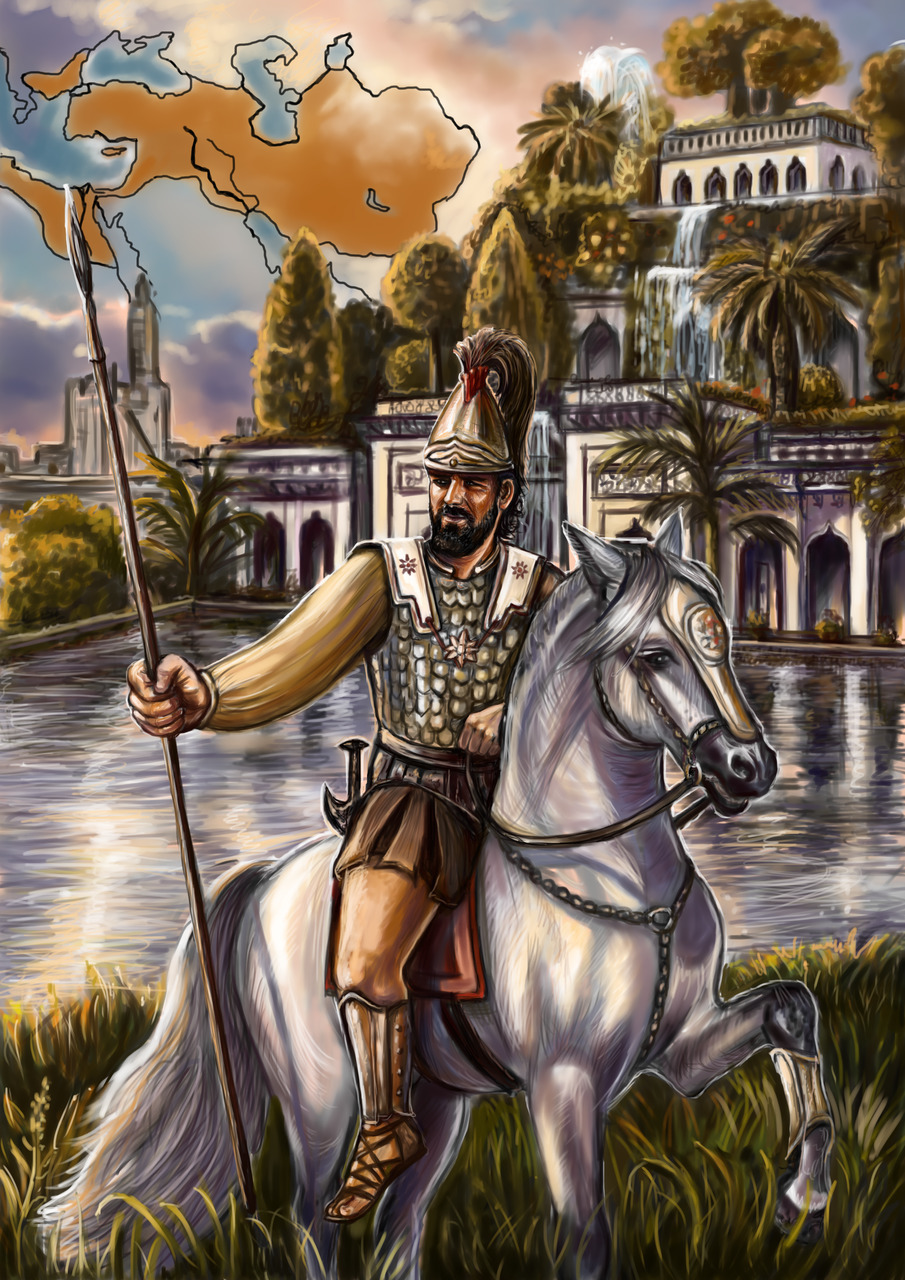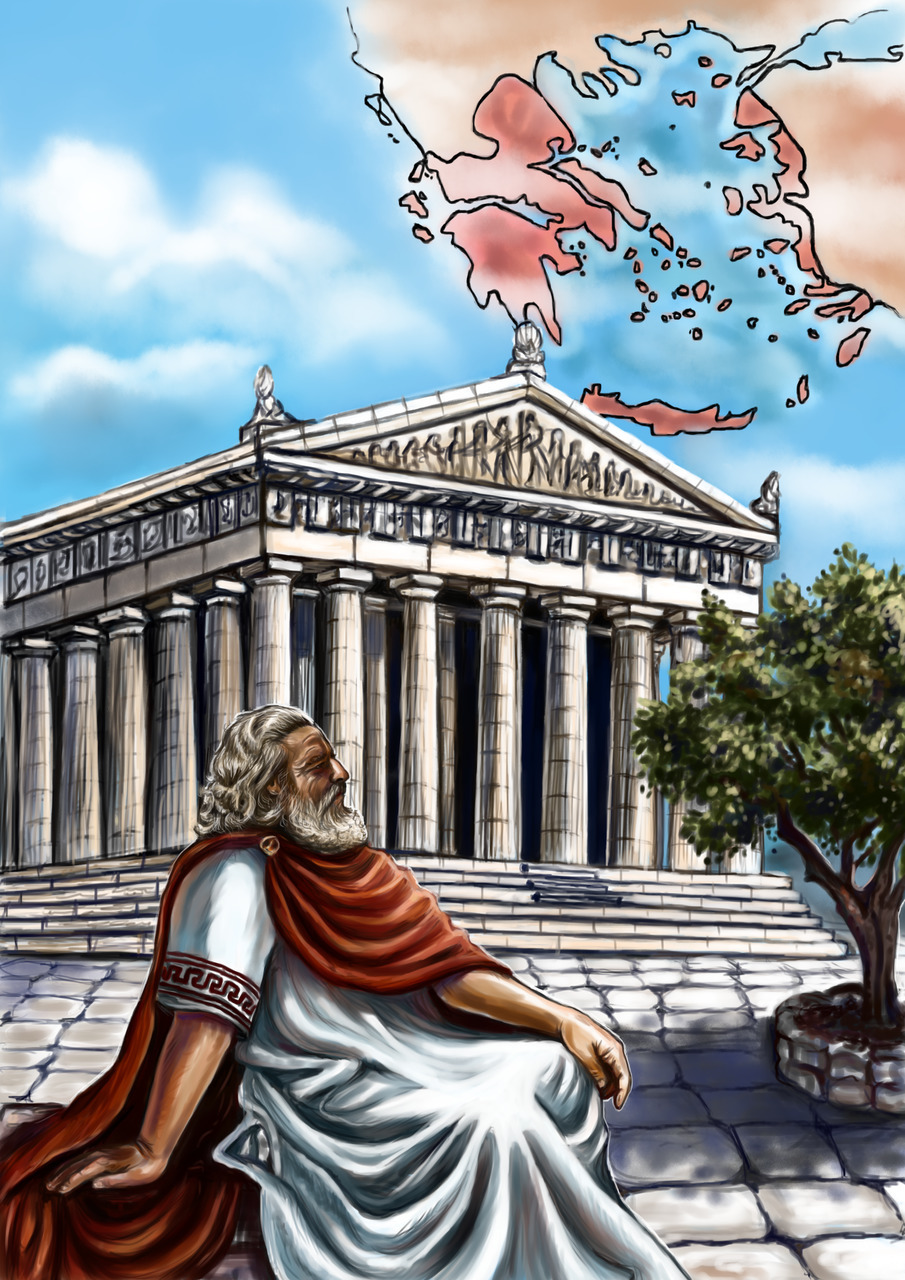
Бесплатный фрагмент - History and math. Нand in hand
Book 1. Ancient World. 50 mathematical tasks for students based on historical events. Ancient Rome, Greece, Egypt and Persia

Dedicated to my father Vladimir Nikolaevich Moskovets, who loved to teach me the history of the Ancient World and discuss it in the evenings of the now distant 80s…

Introduction
Let’s remember the tasks that we all had at school. Sometimes they were interesting, sometimes tedious. Someone was always travelling from point A to point B. Why? There was no answer. Still, they always reached their destination. Time flew, and we always forgot about this brave traveller. The purpose of the book and the tasks inside is to make students remember such travellers, and, while doing mathematics, also learn about history.
Some of the characters are fictional, but the larger part really existed and left a mark in history (their names can be found on the list at the end of the book).
Just like the events: the real ones have a date next to them.
A list of the used terms is located at the end of the book. It goes along with a list of all historical personalities mentioned in the book. All the tasks (and more) can be found on www.mathistory. xyz.

Ancient Egypt
Ancient Egypt still beckons tourists with its amazing pyramids, mystical Sphinx, mysterious hieroglyphs…
E.1.Time scares everyone and fears pyramids
The largest pyramid in Egypt (probably, in the world) is the Great Pyramid of Giza (the tomb of Fourth Dynasty pharaoh Khufu).
Scientists still have not reached a consensus and can only guess how and when it was erected. In Egypt, the official celebrated date of the start of the construction is August 26, 2540 BC. It is believed that the construction took 20 years. How many years has the pyramid been standing if the current date is 2017?
E.2. The first peace treaty
The first peace treaty was made before Christ by the great Pharaoh Ramesses II with the Hittite King. If Ramesses II had been born 9 years later, then by doubling the date of his birth, we would have gotten the date of the start of the construction of the pyramids (see the previous task). When did Ramesses II die, if, according to some sources, he lived for 66 years?
E.3. Gardens and cubits — what do they have in common?
After the war with the Nubian tribes, the Amenhotinox — one of the Egyptian military leaders, — gave his squire Hannumat with a small garden measuring 45 by 45 cubits.
Can you count how many carrots he planted in the garden, if each cubit stood for 45 carrots? (Some may wonder why this problem is here, but it helps to practice mental counting. All actions can be done in mind using simple techniques)
E.4. What came first — Alexandria or Rome?
Certainly, Rome was founded earlier, the official date of its foundation is considered to be 753 BC. Alexandria was founded by Alexander the Great in Egypt nine years prior to his death. Both cities still exist. Determine which year Rome was twice as old as Alexandria.
E.5. Stadium and the Pyramids
Can pyramids be used for sports? The pharaohs hardly would have liked it.
Calculate how many laps one needs to make around the Great Pyramid of Giza to run a marathon distance of 42 km (see more about the marathon distance in task G. 10). The length of the pyramid’s side is 440 royal cubits.
E.6. On a trip along the river Nile
At one time Thebes used to be the capital of Upper Egypt. The Pharaoh set in a boat downstream the Nile. Half the time servants rowed at 4 km/h, then a quarter of the time the passengers sailed at 6 km/h, the rest of the way the boat moved under sail and oars at 8km/h. Finally, the Pharaoh arrived to Memphis, having travelled 726 km along the Nile. How many kilometers did the boat go under oars, if the daytime lasted for 12 hours?

Ancient Persia
Ancient Persia (or the «Achaemenid Empire) was a state that, at its height, stretched from Libya and Greece to India. According to some historians, the population of this ancient Empire reached 50 million: almost half the population of the entire planet at that time.
P.1.Grass tribute
The Persian Empire in 521 BC was divided into 20 satrapi and each of them paid tribute. However, there were areas that were not satrapies, but still had to pay tribute. For example, the Arabs in the territory of modern Jordan sent 1,000 talents of thyme creeper annually. Dried plants were brought to the Empire.
How many donkeys are needed daily to transport all the thyme for drying if there is 15% of moisture in dried thyme and 95% in newly harvested? One donkey transports a load of 5 talents once a day.
P.2. Gold and silver
Of course, a tribute in grass is an exotic type of tribute and, in fact, most of the tribute was paid in gold or silver. The greatest tribute in silver was paid by Babylonia and Assyria. The amount was 1,000 silver talents. Besides horses, grass and other «non-metal» tributes, Babylonia and Assyria paid 1/7 of the entire tribute in silver.
How many gold talents did India pay, if the value of silver was 3/4 of the tribute, and the gold was paid only by India. The ratio of silver to gold at that time was 1:10. (i.e., 1 gold coin was worth 10 silver coins, equal in weight). Determine the weight of all the gold tribute by India in kilograms. 1 Persian gold talent equals 1 silver in weight: 33.65 kg.
P.3. The population of the planet
Some historians suggest that at the height the Achaemenid Empire half the world population lived there. The most numerous at that time was the Indian nation, and 1/7 of the Indians was part of Achaemenid Empire. How many people lived outside India and Persia at that time, if the number of Hindus in the Achaemenid Empire was 10%? (Hint: read the beginning of the chapter).
P.4. Army size
The most important battles in the history of Ancient Persia are the Battle of Thermopylae, in September 480 BC, in which Leonidas and his 300 fearless Spartans went down in history for centuries, and the Battle of Gaugamela on October 1, 331 BC, after which the Achaemenid Empire ceased to exist, conquered by young Alexander the Great (see more in task D.4). In both cases, the Persians had huge armies: both armies added together constituted 0.9% of the total population of the Empire. How many Persian soldiers took part in the Battle of Gaugamela, if we know that there were 1/4 more of them than in the Battle of Thermopylae? The population of the Empire equaled 50 million.
P.5. The King`s «eyes» and «ears»
A whole army of spies worked for Cyras II the Great. They were keeping an eye on everything that was going on in the Empire. Some even believe that the security servicemen lined up in a chain from the capital to the outskirts and shouted the latest news to the next in the chain.
It took thirty days for an army to march from the border of the Empire, but the king could know it was approaching in just one day because of his line of spies.
See whether this is possible if the army moves 8 hours a day, the king`s «ears» stand every 200m and the speed of sound 330 m/s. (for convenience sake, let it be 300 m/s). The speed is 5 km/h.
Let’s assume that it takes 10 second to convey the message from one spy to another.
P.6. Anniversary of Cyrus II.
Have you ever attended the king’s anniversary? No? But they are still held. Iran, for example, celebrated the 2,500 anniversary of the death of King Cyrus II in 1971. How long did Cyrus live, if he came to the throme in 559 BC, when he was 31 years old?

Ancient Greece
Ancient Greece was home to many mathematicians, philosophers, sculptors, and, of course, military leaders. It is also a place that gave democracy to the world.
G.1. Athens is the capital of Greece
The history of Athens dates back centuries. It is difficult to tell exactly who and when founded Athens. The period of greatest prosperity of Athens was the 5th century BC. Naming the exact number of population also proves to be a difficult task — the census was not conducted, and no one saw slaves as equal men: they were seen as property. Aside from slaves, there were wealthy citizens in Athens (slave owners, artisans), demos (poorer citizens), metics (migrants). Let’s assume the following: there were 90,000 slaves in Athens (historians believe this number to be 75—100 thousand) and settlers accounted for 20% of the population. There were as many citizens as slaves and metics combined. How many people lived in Athens?
G.2. Alexander the Great — a builder?
Let’s add together the number of cities founded by Alexander the Great and the number of modern countries where those cities are located. (Half the number of the cities) Then, add another 1/10 of the total number of cities and states, and we’ll get the number of years Alexander the Great lived. By the way, he used to name his cities Alexandria. 3/5 of the cities founded still exist, but have changed their names, all except for one. How many cities, founded by the King of Macedonia, have survived to this day? Alexander the Great was born in 356 BC and died in 323 BC.
G.3. How many students were in Pythagoras’s school?
«Tell me, famous Pythagoras, how many students attend your school and listen to your speeches?»
«I’ll tell you,» the philosopher replied. «Half of my students study mathematics, a fourth of them — music, and a seventh of them have taken a vow of silence. Additionally, there are three women.
How many students are there in Pythagoras’s school? They were also called «Pythagoreans».
G.4. The Battle of Gaugamela, and Darius III’s miscalculation
Like many generals, Darius III had initially underestimated his enemy. Therefore, he hastily gathered war elephants, 200 chariots, infantry and cavalry and recklessly rushed into battle. The Macedonians immediately captured the elephants, and Alexander’s 7,000 horsemen and 40,000 infantry put the Persians to flight.
Indeed, some historians claim that Darius’s army outnumbered the Macedonians by ten to one. However, there are more conservative estimates. How many horses took part in the battle if a chariot was harnessed with two 2 horses, and Darius had 8 thousand more cavalry than Alexander had infantry? Remember that this event took place on October 1, 331 BC, after which the Achaemenid Empire ceased to exist.
G.5. Calendars and sport
As you may have already guessed, we are talking about the Olympics. From the first Olympics the ancient Greeks began to count years using their calendar. Calculate in what year, according to the ancient Greek calendar, this book was published, if the first Olympics took place in 776 BC.
G.6. The Battle of Thermopylae
Бесплатный фрагмент закончился.
Купите книгу, чтобы продолжить чтение.